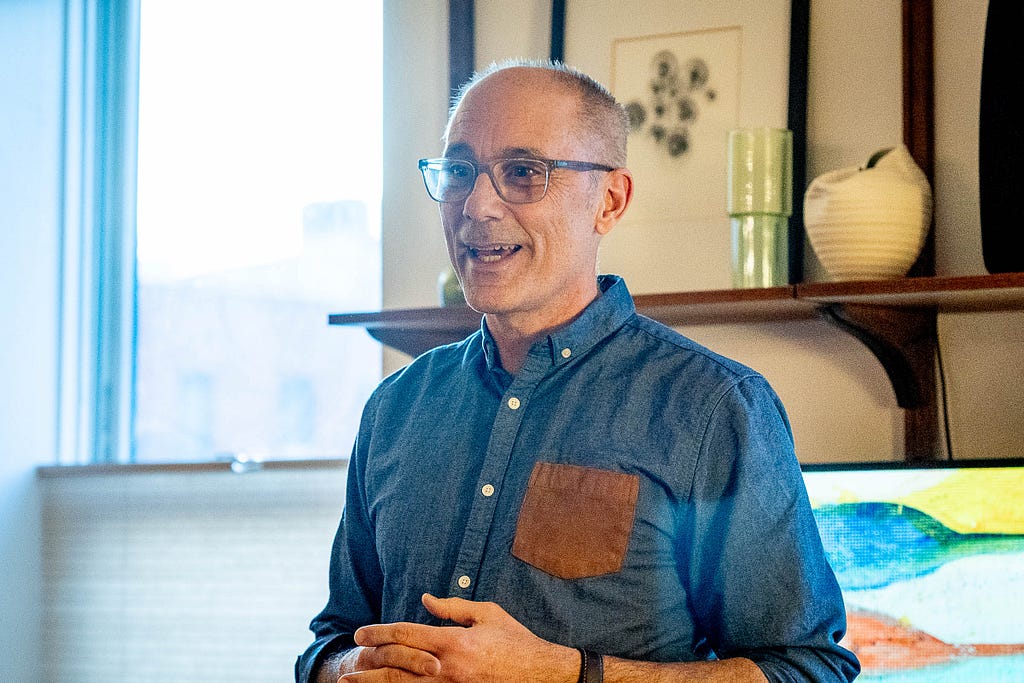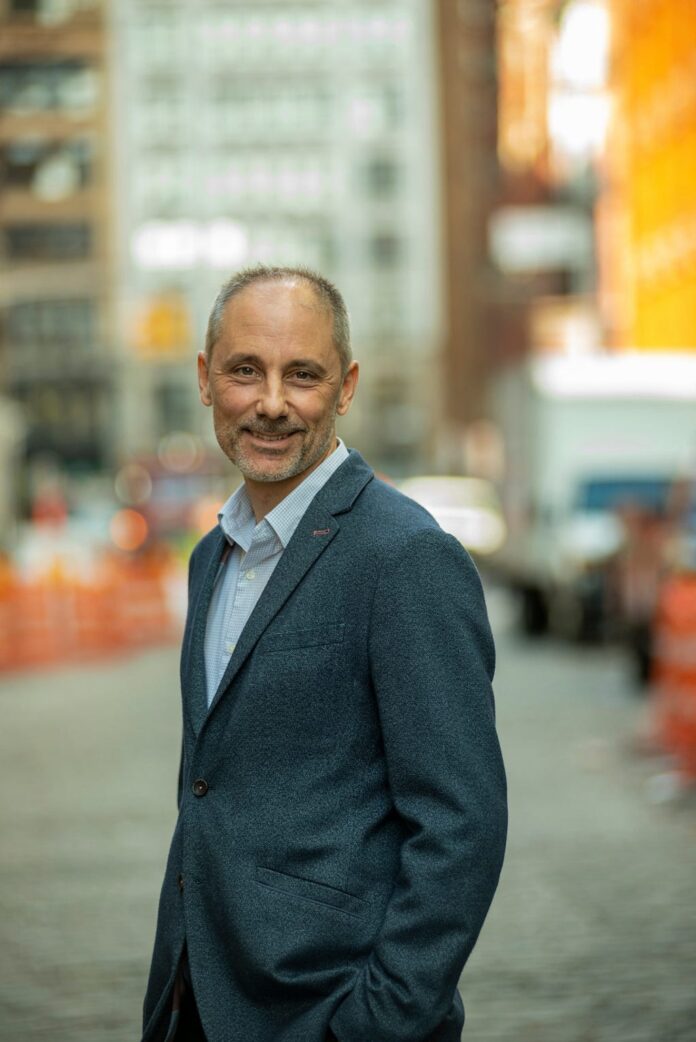Bold Visionaries: Rob Hansen of Goodnation.io On Organizations Driving Transformative, Impact-Centered Initiatives
An Interview With Martita Mestey
Think big. We began with a set of funds that contributed to reducing hunger and homelessness in communities. It wasn’t until we raised our sights to the possibility of ending poverty, the problem underlying so many others, that we gained momentum.
In an era where social and environmental challenges are increasingly pressing, certain organizations stand out for their bold and innovative approaches to creating meaningful impact. These trailblazing organizations are not just meeting the status quo but are setting new standards for what can be achieved through dedicated, impact-focused programs. What does it take to pioneer such transformative initiatives, and what can others learn from their successes? I had the pleasure of interviewing Rob Hansen.
With over 20 years in philanthropy, Rob Hansen is dedicated to making giving more impactful. He honed his fundraising expertise as a Development Director, raising funds from leading New York City foundations, and later at the Robin Hood Foundation, where he spent five years refining strategies to drive measurable impact. Before founding Goodnation, he advised high-performing nonprofits on fundraising and strategic planning.
As Founder and President of Goodnation.io, Rob leads the nonprofit in addressing the root causes of societal problems by empowering changemakers and driving meaningful social impact as a trusted fiscal sponsor and innovator. Rob connects donors with high-impact nonprofits, ensuring their giving aligns with their values and creates effective change. He holds an MBA from HEC Montréal and a BA in English Literature from McGill University.
Thank you so much for doing this with us! Our readers would love to get to know you a bit better. Can you share a bit about your background and what has led you to your current role?
I grew up in poverty, but found my way out. In high school, I embraced the scrappier side of life and got involved in social activism. I started an Amnesty International group, spending every week reading about the horrors dictators inflicted on political prisoners. My friends and I wrote letters to these ruthless leaders, and somehow, shining even a small light on injustice made a difference. I realized that being free meant I was already privileged — and that collective action, even one stamp at a time, can create real change.
Can you share your professional journey and what led you to focus on impact-centered initiatives?
In the past two years, my perspective on impact has completely shifted. Like many in the nonprofit sector, I used to focus on stretching every dollar to help as many people as possible. That wasn’t wrong, but in obsessing over the tree, I missed the forest. I’ve come to realize that the real work isn’t just about some people — it’s about all of us. I now think about what strengthens or weakens the entire forest, and the role I can play in that. Surprisingly, the answer lies in our tax system. That’s where the nonprofit sector has the power to drive change at scale — ensuring the most vulnerable trees in the forest aren’t left behind.
What pivotal moments or experiences shaped your vision for transformative change within your organization?
We failed. There is a lot of emphasis placed on getting things right, but sometimes you have to completely fail to be able to stop and take stock. It’s equally important to give yourself the room to fail and get back up and keep going. Our failure took two forms: one project was a complete bust and another underperformed. Both needed to go but it wasn’t until we experienced the shock of failure that new possibilities opened up. We had always diversified and in doing so were able to pivot to new projects that are now our most successful ones.
What does “audacious impact” mean to you, and how is your organization embodying this vision?
Audacious, to me, means both having a bold vision and an equally bold plan. Goodnation, through its Prosperity Project, envisions the end of poverty in America. The idea that poverty can be ended in the richest country on earth isn’t our idea, it comes from a leading thinker and researcher named Matthew Desmond. Our contribution is to embrace this vision and begin implementing a plan that can get us there. That plan relies on a simple insight: if we can link together all the institutional and individual donors that care about a single place (a town, a city or a county) together in a national coalition, we can change major federal policies like the Child Tax Credit, and lift millions of American children out of poverty. We know we can do it because it was done briefly during the pandemic. We’re going to get it done again, and not stop there!
Can you give an example of a key initiative your organization has led that significantly impacted the communities you serve?
While we work to go where America has never gone before (an America free of poverty), we stay grounded by also being the home for 40 projects that each, in their own way, works to transform individual communities. This is Goodnation’s work as a fiscal sponsor for changemakers. In the past four years, Goodnation has been the home of efforts to support grassroots democracy work, funding hundreds of communities. The work is simple and transformative. Grassroots groups, groups that are there before, during and after every election cycle, work to engage community members to participate in our democracy.
What are some of the challenges you’ve faced while driving these transformative programs, and how did you overcome them?
To borrow from the start-up space, I think the biggest challenge is finding product-market fit. There are many powerful ideas that could transform our country, but at the end of the day, these ideas need to be translated into concrete projects that can achieve their objectives while engaging and inspiring donors. To get there, we have remained open, always diversified, and now build projects more deliberately with input from the donor community. We spend more time workshopping and testing both approaches and channels. Our belief in the power of the work is necessary, but not sufficient. We need to know what the world thinks of it.
How do you balance creating measurable impact with the business’s need to grow and remain sustainable?
Mission alignment is important to us, and we are now guided by our north star, which is to bring about systemic change, getting to the root of issues that hold our country back. To do so, we’ve built a hybrid business model, consisting of a social enterprise, a 501(c)(3) and a 501(c)(4). Our fiscal sponsorship program is stable and growing, because at its core it is a partnership with a diverse array of changemakers. This gives us the financial foundation on which to dream bigger, as in our Prosperity Project.

What are your “5 Things You Need To Bring An Audacious Idea to Fruition”? If you can, please share a story or example for each.
1. Think big. We began with a set of funds that contributed to reducing hunger and homelessness in communities. It wasn’t until we raised our sights to the possibility of ending poverty, the problem underlying so many others, that we gained momentum.
2. Start small. Build the miniature first and shop it around to people you trust enough to tell you when you are on the wrong track. Next experiment with real partners and customers.
3. Seek scale. You are seeking an insight and linked strategy that will enable you to light a fire and watch it spread. Your job should just be to give it more oxygen. And sometimes you have a great idea, everyone loves, and no one acts on it. We’ve been there.
4. Listen. Listen for what doesn’t work. People will spend a lot of their time telling you how great it is. Don’t listen to that. Listen for the “but…,” ask for and listen to why it doesn’t work.
5. Do the work. It can be a massive amount of work to get the first partners, the first donors, the first clients. Expect that and continue to do the work. If the idea is sound, it will get easier, or at least, the challenges will change.
Can you share a story of someone who has inspired your commitment to creating positive change?
Early in my career, I worked for a leader in the afterschool education and youth development movements named Janet Kelley who completely confused me. Then, I was focused on the concrete, the doable, and the tangible outcomes. She, meanwhile, reveled in the process, and brought endless people and ideas to the table. She created a process that was what they would probably now call radically open. It was her nature. At the end of these sessions, she had both powerful new ideas and buy-in. I’m still trying to replicate that.
How do you envision the future of impact-driven businesses, and what role will your organization play in that future?
I think that we may be entering a period of retrenchment, one where people hesitate and don’t take the extra step of infusing purpose and impact into their businesses. If so, it’s a shame but, as is always the case, when a field is left open it becomes an even greater opportunity for those who dare to step in. I can only guess that successful businesspeople feel satisfaction about establishing a flourishing enterprise, but I know that it is a thousand times better to do so while creating a business that improves a community, our country and more broadly our world. Making money is the easy part.
We began as a social enterprise with impact investors providing the seed capital to get our social enterprise Goodnation Philanthropy Advisors started. Once up and running, many donated their shares to the Goodnation Foundation. We think this could be a powerful new model for seeding nonprofits because currently there is very little innovation capital in the space. We want to help change that.
How can our readers further follow your work or your company online?
Readers can visit our website at goodnation.io and follow us on Instagram, LinkedIn, Twitter, and Facebook.
This was very inspiring and informative. Thank you so much for the time you spent with this interview!
About The Interviewer: Martita Mestey is celebrated as a leader in sustainable agriculture and AgTech due to her tireless efforts to modernize the industry, placing a strong emphasis on equity and sustainability. As the founder of FarmdOut, her commitment to harnessing advanced technology and substantiated research shines through her endeavors to confront ecological issues within contemporary agriculture. Guided by Mestey, FarmdOut has become a pioneer in mapping all farms across the United States and Puerto Rico. By leveraging satellite imagery, computer vision, sensor technology, and Geographic Information Systems (GIS), this initiative yields comprehensive data that empowers farmers to make informed decisions about crop cultivation, land use, and sustainable practices. Mestey is renowned for championing the welfare of farmers, frequently addressing issues of burnout while fostering resilience within the farming community. Her fervor for cultivating the next generation of farmers is evident in her focus on diversity, innovation, and eco-friendly practices. In addition to her hands-on work with FarmdOut, Mestey also disseminates her knowledge and enthusiasm via her popular interview series in Authority Magazine. This initiative stimulates broader engagement in the transition towards a healthier, more sustainable food system. At its core, Mestey’s mission is to promote a more democratic agricultural industry, advocating for a food system that is simultaneously sustainable and equitable.
Bold Visionaries: Rob Hansen of Goodnation On Organizations Driving Transformative, Impact-Center was originally published in Authority Magazine on Medium, where people are continuing the conversation by highlighting and responding to this story.


